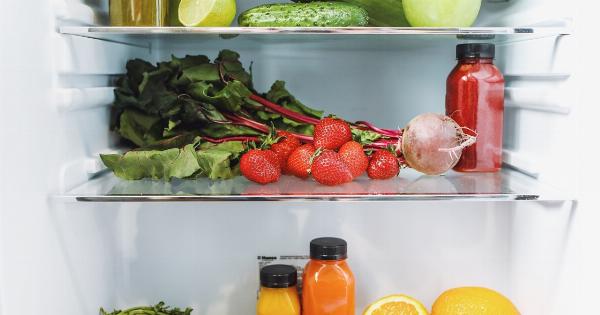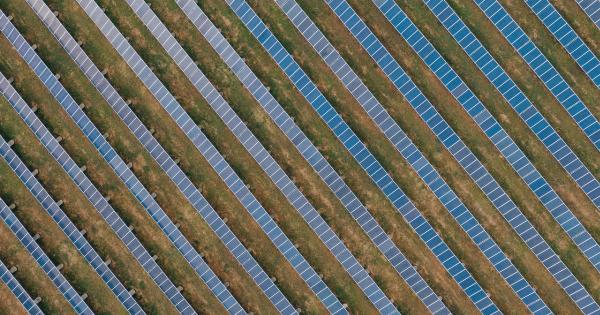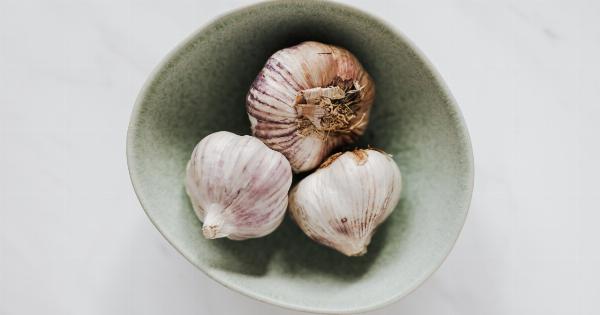Fruits and vegetables are essential for maintaining a healthy diet. However, it can be challenging to keep them fresh for an extended period, especially in the fridge.
To help you preserve the freshness and maximize the shelf life of your produce, we have compiled ten useful hacks. By following these simple tips, you can ensure that your fruits and vegetables stay crisp, flavorful, and nutritious.
1. Store Fruits and Vegetables Separately
When storing fruits and vegetables in the fridge, it’s crucial to keep them separate. Fruits release a natural gas called ethylene, which can speed up the ripening process of nearby produce.
To avoid premature spoilage, store fruits and vegetables in separate compartments or containers within your fridge.
2. Use Airtight Containers or Bags
Moisture is one of the main factors that cause fruits and vegetables to spoil quickly. To combat this, store your produce in airtight containers or sealed plastic bags.
These containers prevent excess moisture from reaching the fruits and vegetables, helping to prolong their freshness.
3. Wrap Leafy Greens in Paper Towels
Leafy greens like lettuce, spinach, and kale tend to wilt quickly. To prevent this, wrap them loosely in paper towels before placing them in a plastic bag or container.
The paper towels will absorb any excess moisture, preserving the crispness of the greens for longer.
4. Keep Berries Dry
Berries are delicious but also delicate. To prevent mold growth and prolong their shelf life, avoid washing them until you are ready to consume them. Store berries in a breathable container lined with paper towels to absorb any moisture that accumulates.
5. Trim and Store Herbs in Water
To keep herbs fresh, trim the stems and place them in a glass of water. Cover them loosely with a plastic bag and store them in the fridge. This method will help retain their moisture and prevent wilting.
Remember to change the water every few days to maintain freshness.
6. Store Citrus Fruits at Room Temperature
Unlike most fruits, citrus fruits like lemons, oranges, and grapefruits do not need to be refrigerated immediately. Instead, store them at room temperature, away from direct sunlight. This allows them to retain their flavor and juiciness for longer.
7. Freeze Excess Fruits and Vegetables
If you have an abundance of fresh fruits and vegetables that you won’t be able to consume in time, consider freezing them. Freezing helps preserve their nutrients and extends their shelf life significantly.
Properly prepare and store them in airtight containers or freezer bags for future use.
8. Keep Potatoes, Onions, and Garlic in a Cool, Dark Place
Potatoes, onions, and garlic should not be stored in the fridge, as the cold temperature can cause them to sprout or spoil quickly. Instead, keep them in a cool, dry, and dark place like a pantry or cupboard.
Ensure they are stored separately to prevent them from absorbing each other’s odors.
9. Avoid Pre-cutting Fruits and Vegetables
While pre-cut fruits and vegetables offer convenience, they tend to spoil faster than whole ones. If possible, purchase whole produce and cut them as needed.
This helps to retain their freshness while minimizing exposure to air and microbes that accelerate spoilage.
10. Use Vacuum Sealers
Investing in a vacuum sealer can be a game-changer when it comes to preserving the freshness of fruits and vegetables. By removing the air from the packaging, vacuum sealers greatly reduce spoilage, and extend the shelf life of your produce.
This method is particularly effective for items like carrots, asparagus, and broccoli.
Conclusion
Keeping fruits and vegetables fresh in the fridge doesn’t have to be a daunting task. With these ten easy hacks, you can significantly extend the shelf life of your produce while preserving their nutritional value and taste.
Remember to store fruits and vegetables separately, use airtight containers, and pay attention to their specific storage requirements. By implementing these strategies, you can enjoy fresh, vibrant, and delicious produce for longer periods.




























